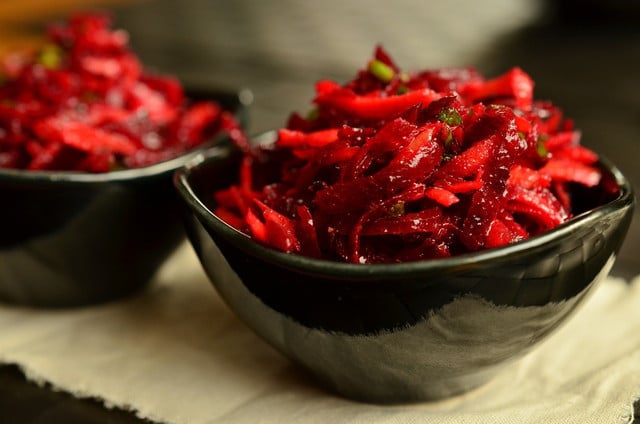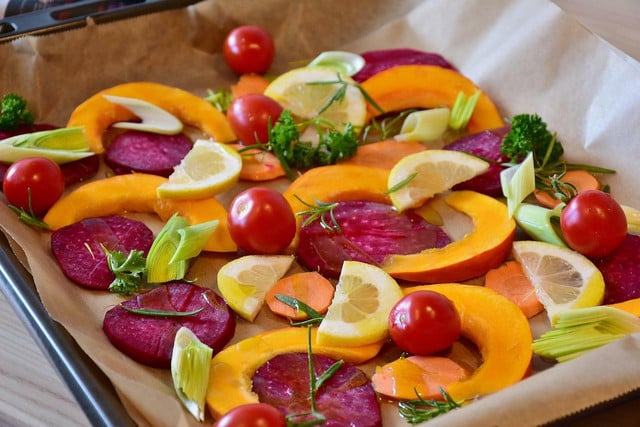Look no further on how to cook fresh beets — any of our 3 easy-to-follow methods will produce delicious results from this healthy and versatile vegetable.
Beets are so tasty — they are earthy and sweet, and almost the entire vegetable can be used, reducing food waste. Red beets are those most commonly grown, and thus found at the market, or store, but you can also grow and buy golden varieties. If you can buy beets with their green tops intact, choose these, as you can use the greens for garnish, lightly steam them, or pop them in a lush salad.
Beets, once planted, love the sun, and are easy to grow. Most varieties thrive best when they are planted in the spring, and therefore harvested in the summer. In Northern and Midwestern areas beets can often be planted through the fall, but it’s best to plant when the weather is cooler. In the South, summers can get too hot to plant. You’ll likely find an abundance of beets from June to October.
How Long Will Raw Beets Keep Fresh?

(Foto: CC0 / Pixabay / PhotoMIX-Company)
Beets also keep well. You can store uncooked beets for a couple of months, away from moisture (the greens will only last a few days up to a week). You can also store them in the refrigerator (don’t wash them beforehand, as the excess moisture will reduce their shelf-life). Choosing local and organic beets also reduces our carbon footprint, allows for fewer pesticides, and supports our much-needed pollinators.
Beets can be eaten raw but might be a little bitter. Cooking them with these tried and tested methods will give you a soft and sweet result.
How to Cook Beets



(Foto: CC0 / Pixabay / congerdesign)
Whichever method you choose, first prepare your beets by removing the leafy greens, if attached, and keeping an inch of the stem. Give the beets a good scrub. Leave the skin on, as it is much easier to remove once cooked.
Boil
After preparing your beets, you can put them in a large pan. The pan needs to be big enough to cover all the beets, plus an additional 1-2 inches of water. You may get some color leakage — this is quite normal (you can add a touch of vinegar to the water to minimize this). Bring to a boil, cover, and then let them simmer. The beets will take 30-45 minutes to cook, depending on size. You can test with a fork to see if they are tender. You want to find that special place, where they are cooked, but not mushy.
Roast
You can roast your beets on their own, or with other vegetables. If roasting on their own, coat with olive oil and a dash of salt and pepper and place in an oven-proof dish. Roast at 400°F and check them after 40 minutes. Again, depending on size, they may take a little longer, perhaps up to an hour to reach the perfect tenderness. Test with a knife — it should go into the center smoothly when ready. Once cooked, cool completely, peel away the skin and prepare as you wish.
You can also slice up the beets before cooking, which works best if roasting with other vegetables. You can experiment with your favorite size, but 1/2 inch slices or wedges will work nicely, and reduce cooking time to around 25 minutes.
Steam
You can also opt to steam your beets. Steaming vegetables is similar to boiling but uses minimal water, and locks in vitamins and nutrients. You can use a large pot and a steamer basket. Make sure the water doesn’t boil dry. This method also takes around 30 minutes, dependent on the size of the beets. Again, you can check the tenderness with a fork, to get the ideal texture.
Storing Leftover Beets



(Foto: CC0 / Pixabay / RitaE)
Now you know how to cook fresh beets, what can you do with any leftovers?
- Cooked beets will keep in the refrigerator in an airtight container for 3-5 days.
- You can also freeze beets. After cooking, pop in cold water, then when cool, chop the beets and place in a freezer container (note that they may stain any surfaces they come into contact with, so be prepared for that).
- Pickle them: Most pickling methods follow certain rules. You can follow the same practices as for pickling red cabbage.
Read more:
- How to Plant, Grow & Harvest Beets: Step-by-Step Guide
- How to Boil Asparagus: From Buying to Cooking the Vegetable
- Oven Roasted Butternut Squash: How to Make From 5 Ingredients
Important Information regarding Health-related Topics.
** Links to retailers marked with ** or underlined orange are partially partner links: If you buy here, you actively support Utopia.org, because we will receive a small part of the sales proceeds. More info.Do you like this post?






